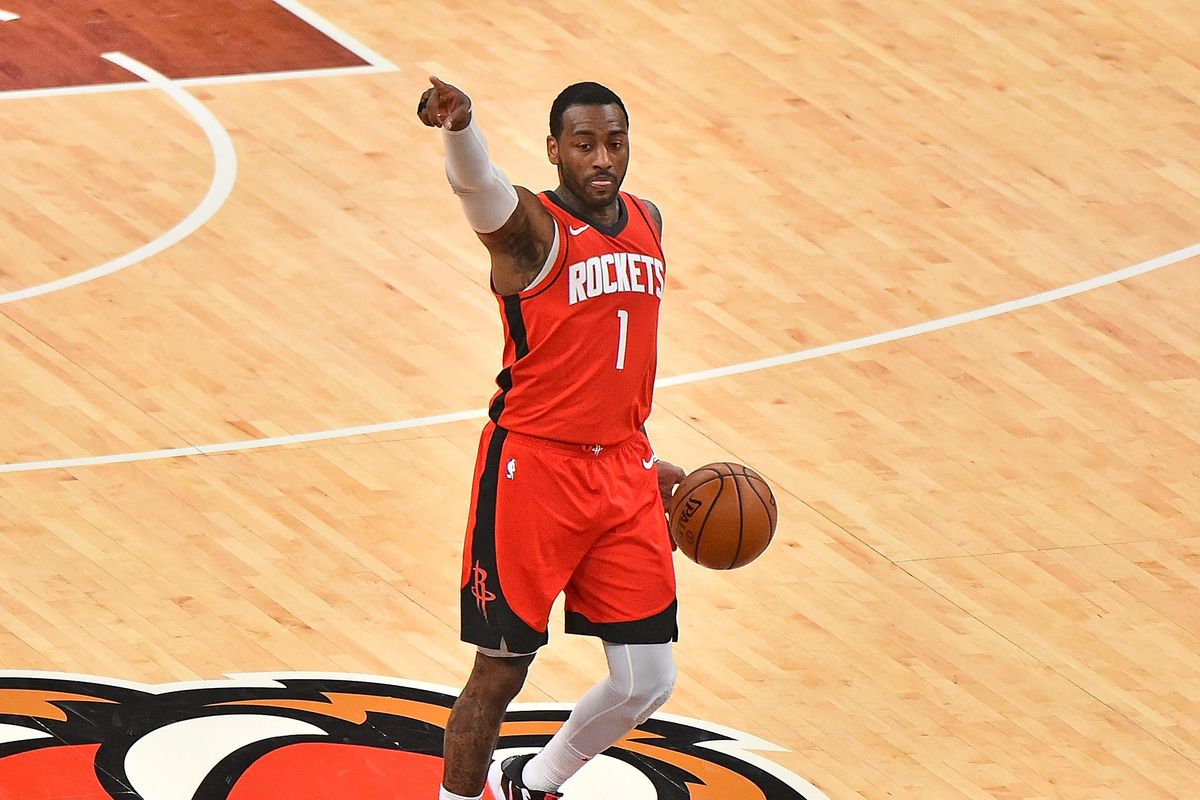ROCKETS 115, GRIZZLIES 103
John Wall and Jae'Sean Tate lead Rockets to dominating victory over Grizzlies
Feb 5, 2021, 1:49 pm
ROCKETS 115, GRIZZLIES 103

The Houston Rockets showed their complete dominance defensively Thursday night versus the Memphis Grizzlies as they won 115-103. No player for the Grizzlies scored over 16 points against the Rockets' defense. John Wall and Jae'Sean Tate stood out the most in the Rockets' win. The saddest part of the night was Christian Wood's ankle injury, which became heartbreaking.
On Wednesday night, the Rockets were defeated by the Oklahoma City Thunder in a blown-out fashion. John Wall did not play because of the passing of his grandmother. The Rockets lacked energy against the Thunder. Wall understood his leadership, guidance, and presence was clearly missing in Wednesday night's loss. In Thursday's victory, Wall had a plus 34 from the field. Wall's misdirection and ability to attack the paint created open opportunities for his teammates. He created pressure on the Grizzlies interior defense, so the Rockets had open shooters on the perimeter. The Rockets shot 42% from the three-point line, including Wall shooting 44% too. Wall increased the Rockets offensive rating from 80.6 to 117.6 against the Grizzlies within two nights.
"It makes it immensely easier," as Coach Silas mentioned on Wall's game. "He has a great feel for the game. He has great feel for the point guard position as far as who needs [a] shot. Attacking defenses and defenders that might not be able to guard him. When you have your leader on the floor it makes every one's job easier."
Wall loves directing the offense, so everyone is involved in different actions and accumulated inside the set. He has become great at catching the defense off guard. Those eight assists came from finding the right teammate in position. Wall finished with 22 points by only taking six shots.
"He [John Wall] sees stuff a lot of people don't see and that's why he is one of the best point guards in the league," as Jae'Sean Tate gave Wall praise. "He is such tough cover because he is so fast and knows how to manipulate the defense to get what we need."
Speaking of Tate, his night was fantastic against the Grizzlies as he took advantage of the creases in their defense. Tate became effective by taking open shots, being aggressive in the paint, and setting quality screens. He even showed his ability to cut towards the basket. Tate's IQ is impressive for a 25-year-old rookie. He shot 77% from the field and had 19 points in Thursday night's game. Tate became sneaky inside the Grizzlies painted area by being 4/4 in the restricted area. Hopefully, Tate climbs the poll of Rookie of the Year candidacy.
Career-high 19pts along with 7reb for @o_tate_ in the win! https://t.co/i81bGmrOcf— Houston Rockets (@Houston Rockets) 1612500680.0
"It's about me being comfortable out there," as Tate mentioned to the media. "Just getting more used to the pace of the game and learning how to read the game. The vets are helping me dissect [the] game."
The Rockets' defense did a tremendous job of slowing down the number one bench in the NBA. In the beginning of the game, the Rockets did have a problem slowing down the Grizzlies transition offense. The Rockets' biggest objective was getting back on defense as the Grizzlies were ferocious with their fast break points. As the Rockets eventually got set on defense, the Grizzlies struggled from the field. The Grizzlies shot the three-ball at 34.3%, as the Rockets caused contested attempts. Although the Grizzlies finished with 11 offensive rebounds, only seven of those rebounds came from the first quarter. Houston's defensive rating was a 105.1 versus the Memphis.
"I feel like if we can get back in transition and get our defense set, we can really defend and make it hard on teams. Versatility is key in our defense," as coach Silas praised their defensive performance.
The Rockets eventually went on an 18-4 run late in the second quarter, which helped the second-best defense control the game. It's incredible how the Rockets have the second-best defense in the league as they are right behind the Los Angeles Lakers.
Up next: Hopefully, the Rockets maintain their play as they take on the San Antonio Spurs Saturday night.
Oswald Peraza hit a two-run single in the ninth inning to help the Los Angeles Angels snap a three-game losing skid by beating the Houston Astros 4-1 on Saturday night.
Peraza entered the game as a defensive replacement in the seventh inning and hit a bases-loaded fly ball to deep right field that eluded the outstretched glove of Cam Smith. It was the fourth straight hit off Astros closer Bryan Abreu (3-4), who had not allowed a run in his previous 12 appearances.
The Angels third run of the ninth inning scored when Mike Trout walked with the bases loaded.
Kyle Hendricks allowed one run while scattering seven hits over six innings. He held the Astros to 1 for 8 with runners in scoring position, the one hit coming on Jesús Sánchez’s third-inning infield single that scored Jeremy Peña.
Reid Detmers worked around a leadoff walk to keep the Astros scoreless in the seventh, and José Fermin (3-2) retired the side in order in the eighth before Kenley Jansen worked a scoreless ninth to earn his 24th save.
Houston’s Spencer Arrighetti struck out a season-high eight batters over 6 1/3 innings. The only hit he allowed was Zach Neto’s third-inning solo home run.
Yordan Alvarez had two hits for the Astros, who remained three games ahead of Seattle for first place in the AL West.
Peraza’s two-run single to deep right field that broke a 1-1 tie in the ninth.
Opponents were 5 for 44 against Abreu in August before he allowed four straight hits in the ninth.
Astros RHP Hunter Brown (10-6, 2.37 ERA) faces RHP José Soriano (9-9, 3.85) when the series continues Sunday.
